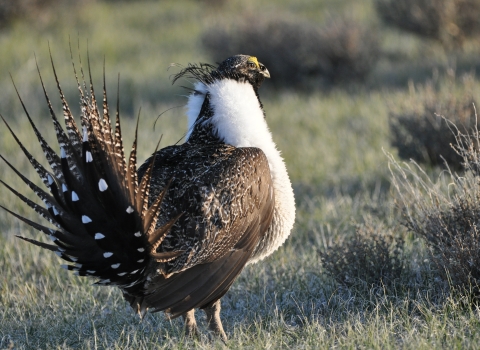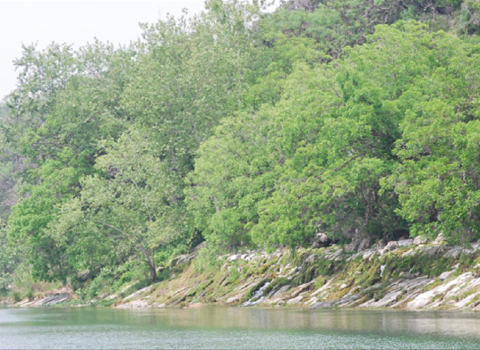VENTURA, Calif. - The U.S. Fish and Wildlife Service announced the availability of a final Habitat Conservation Plan and incidental take permit for the Monterey County Water Resources Agency’s (MCWRA) periodic management of the Salinas River Lagoon and sandbar for purposes of flood control in Monterey County. The Service signed the 5-year incidental take permit on March 28, 2024.
The final HCP is a strategy to conserve the federally endangered tidewater goby, threatened western snowy plover , and threatened Monterey spineflower while allowing MCWRA to prevent flooding of lands adjacent to the Salinas River Lagoon during severe storm events and ensure compliance under the Endangered Species Act. As mitigation for effects from beach access and sandbar excavation activities associated with management of lagoon water levels, MCWRA proposes to fund two research projects to support tidewater goby recovery, contribute funding to California State Parks’ western snowy plover habitat management and public outreach programs at Salinas River State Beach , and fund the removal of invasive species invasive species
An invasive species is any plant or animal that has spread or been introduced into a new area where they are, or could, cause harm to the environment, economy, or human, animal, or plant health. Their unwelcome presence can destroy ecosystems and cost millions of dollars.
Learn more about invasive species on one acre of Monterey spineflower habitat at the state beach.
“The Monterey County Water Resources Agency collaborated closely with the Service in developing this HCP, which will contribute to the recovery of three federally listed species while ensuring MCWRA’s compliance with the Endangered Species Act,” said Mark Ogonowski, senior fish and wildlife biologist with the Ventura Fish and Wildlife Office.
The HCP was prepared by MCWRA to support its application for an incidental take permit. Habitat Conservation Plans are a necessary part of an application for an incidental take permit under the Endangered Species Act. The final HCP and incidental take permit are available for public viewing.
Working with others is essential to protecting ecosystems that benefit society as a whole. The Service regularly engages conservation partners, the public, landowners, government agencies, and other stakeholders in our ongoing effort to identify innovative strategies for conserving and recovering protected wildlife, plants, and their habitats.
The mission of the U.S. Fish and Wildlife Service is working with others to conserve, protect, and enhance fish, wildlife, plants, and their habitats for the continuing benefit of the American people. We are both a leader and trusted partner in fish and wildlife conservation, known for our scientific excellence, stewardship of lands and natural resources, dedicated professionals, and commitment to public service. For more information on our work and the people who make it happen, visit http://www.fws.gov/ventura. Connect with our Facebook page, follow our tweets, watch our YouTube Channel, and download photos from our Flickr page.



